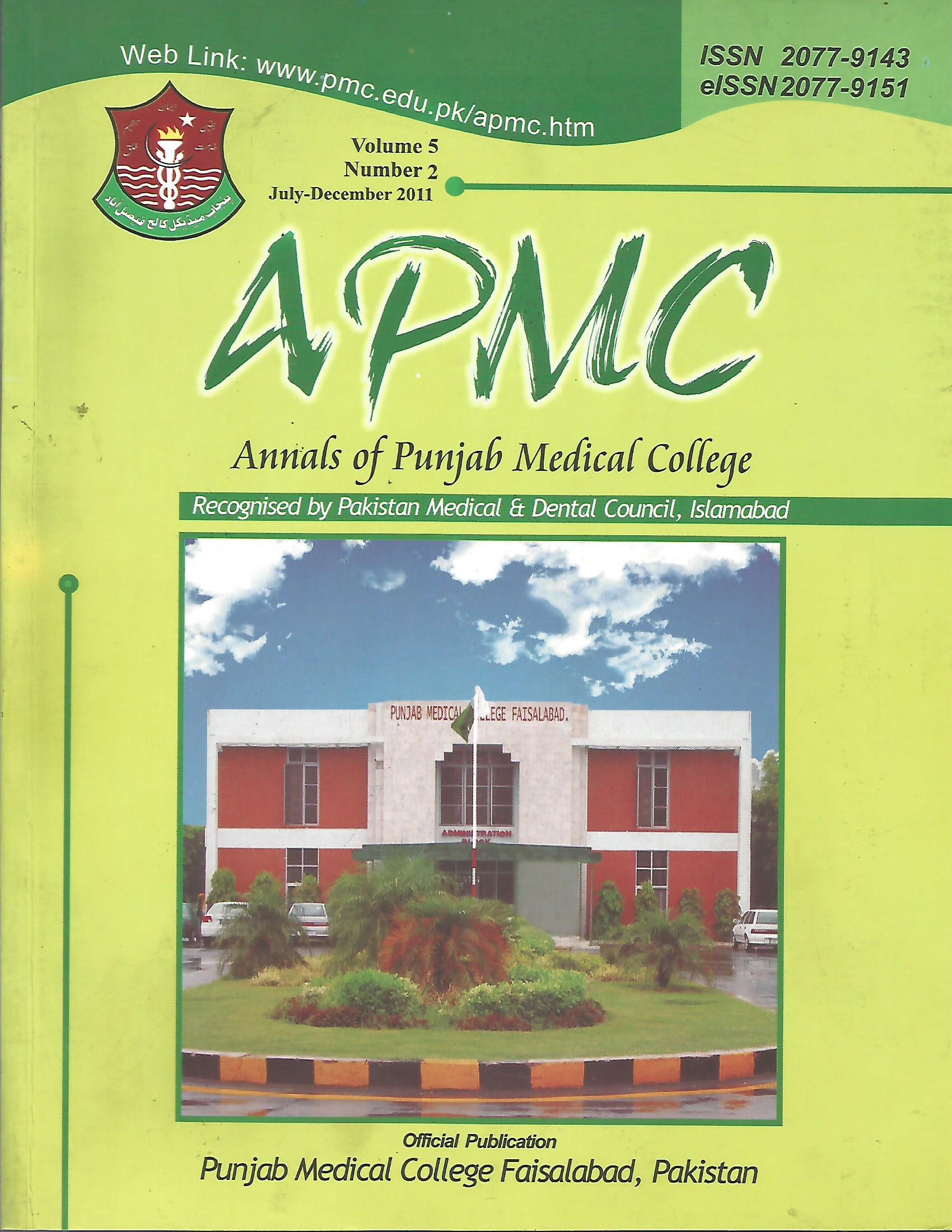Optic Nerve Astrocytosis (Astrogliosis), Induced By Ethambutol
Abstract
Purpose: To determine astrogliosis in optic nerve of rabbit induced by ethambutol. Materials and Methods: Ten, New Zealand white, albino rabbits of either sex, 6-12 months old; weighing 1- 2 kg were randomly divided into two group comprising five animals in each. Group A served as control, while Group B was given ethambutol 100 mg/kg/day for four weeks. At the end of experimental period, each animal was sacrificed by using chloroform and both optic nerves were dissected out, preserved and processed; in this way, twenty optic nerve specimens Maximum stone size included in our study was 3 cm. Allpatients included in our study were treated by rigid URS and stone fragmentation with Pneumatic Lithoclast. (ten for each group) were collected from ten albino rabbits. Results: Mean number of astrocytes, calculated in group B was 27.94 ± 2.94, that was significantly increased from those in group A, showing mean number of astrocytes as 09.66 ± 2.16 (p value = 0.001). Conclusion: Ethambutol, in toxic doses, induces the proliferation of astrocytes in optic nerve, a part of astrogliosis, indicating the repair process in damaged optic nerve.

 This work is licensed under a
This work is licensed under a 